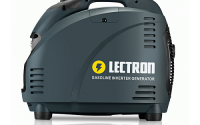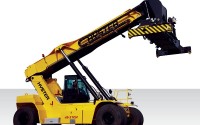A Complete Guide to Drill Bits
Drills bits are the irreplaceable cutting tools that fit into hand or powered drills and are used to drill holes in different depths, widths and finishes, and in different materials. They’re also handy in general material removal applications, where speed is the ultimate goal. The vast range of drill bits can be confounding, and this has to do with their purpose. Different holes accommodate different types of fasteners and there are drill bits specially designed to get clean holes and surfaces without damaging the workpiece.
The reliable countersink drill bits are possibly not the first choice for novices. These are specialty drill bits designed to create and widen pilot holes that will take the appropriate countersunk screw. The aim is for a flush finish of fastener and workpiece, and something that is pleasing to the eye. Fasteners will be installed to right depths so as the screw head doesn’t protrude above the surface of the material. This is a finish most often sought after in woodworking projects, such as furniture, and precision fitted screws in metals where aesthetics is valued.
What is Countersinking?
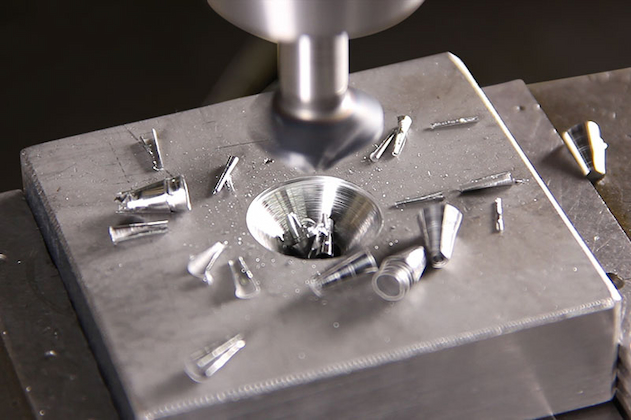
Countersinking is the process of widening and enlarging the rim of a pilot hole to accommodate the needed fastener. As such, countersink drill bits won’t drill to the full depth of the material and length of the fastener. For this purpose, there are different types of countersink bits.
Types of Countersink Bits
Fluted Countersink Drill Bits
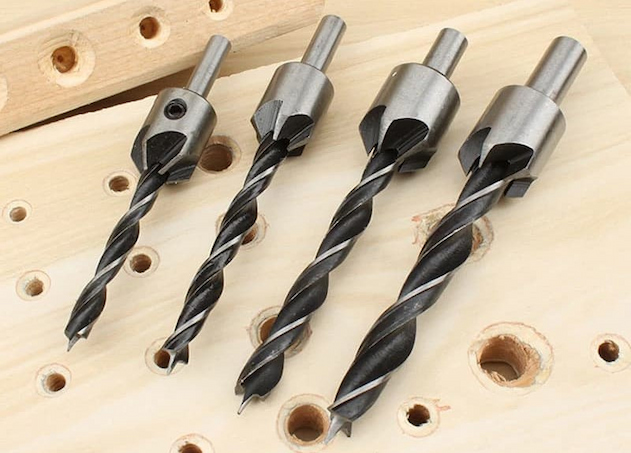
These are the most common, and feature flutes, or cutting edges that remove the materials in the workpiece. They can be optioned with a varying number of flutes. For instance, bits with single flutes are suitable for countersinking into no-ferrous or softer metals. More widespread and versatile are the three fluted bits, used in getting cleaner finishes in a range of metals, wood and plastics. These also exhibit a wider range of head diameters for drilling and countersinking more varied types of fasteners. Bits with five flutes are often used in harder materials, like ferrous metals, hardwoods, and dense plastic.
Cross Hole Bits
These are more recent additions, and instead of flutes have a hole bored through the cone, and this is seated at different angles. The cutting and removal of excess materials depends on the degree of the hole in relation to the hole. The 90-degree cross hole countersink bits are the most common and are widely used for deburring purposes in a range of materials, from softwoods to metals.
Flat Countersinks
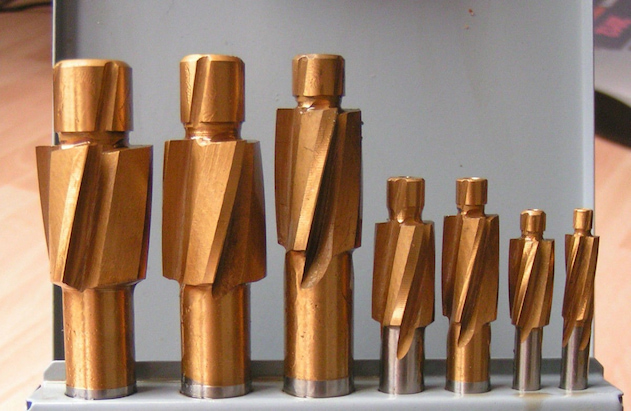
Flat countersink bits have a more cylindrical shape when compared to flute and cross bits. They’re more in line with standard twisted bits and are used for the countersinking of cylinder head screws, hex head screws and nuts. A twisted fixed guide at the tip is inserted into a pre-drilled hole and the wider flutes remove excess material to fit the screw head. The guide allows for precision.
Benefits of a Countersink Drill Bit
Countersinks aren’t required in every project you undertake, but when needed there’s nothing better. There are many reasons why they work better than standard drill bits. First, the neat conical cut-out creates the ideal space for the fastener to be driven into the workpiece. And this is done with precision.
You can attempt to forcibly screw the fastener into the materials, but risk damage. For wood this means splitting or not be able to get the fastener to the flush a countersink creates. Next, the clean holes are precisely matched to the dimensions and shapes of the fasteners, so you achieve better contact and holding force.
Not only does a countersink bring better looks, but the joints it enables to be created are much stronger. Lastly, to completely make fasteners invisible, holes can be drilled deeper and the fasteners can be hidden with filers or plugs. Using any other type of drill bit not only wastes time, but won’t get you even close to these results.
Choosing Countersink Bits
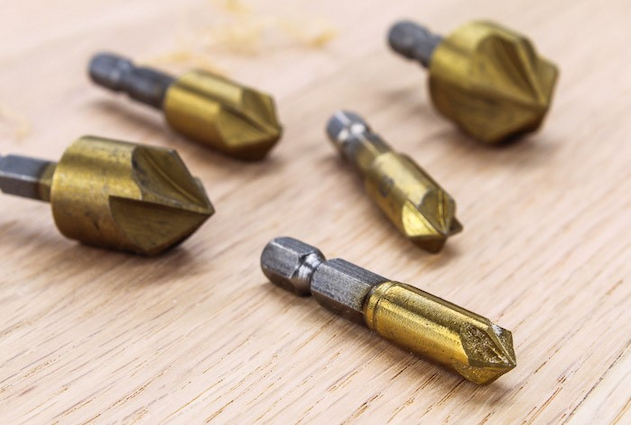
Angles
Bits are often categorised by the angles at which the cutting edges or holes are set. Countersink bits coming in at 90 degrees are used for fasteners specified in metrical units, whereas bits at 82 degrees are those that accommodate most countersunk fasteners specced in imperial units.
These are the two most common angles, whereas others are 60, 100, and 120 degrees. Again, the aim is for a flush finish of the workpiece and the screw head, so determine the type of fasteners you’ll be using and get bits in the right angles. Most retailers offer combination bits, or packaged combos, set at different angles and in varying flute numbers for a range of different tasks.
Bit Diameters
Overall diameters should correspond or be slightly more than the diameter of the fastener. Here there are bits that range from a smallish 5mm in fluted variants, and these go on to 25mm or more to fit even the biggest screw heads. Cross hole bits range from 2mm to 25mm. Shanks naturally get longer and thicker as bit diameters increase.
Shanks
How shanks are shaped determines compatibility with the drill. There are standard or cylindrical shanks, and bits with hex shanks. The latter design is what fits most cordless drills. Also, shank diameters differ, so you may require using chuck adapters. Similarly, shank lengths will mark the difference between deep and shallow sinking.
Materials
High-Speed Steel (HSS) is the most common material that countersink bits come in. This is more than appropriate for a range of different materials, but where more strength is needed, go for cobalt or titanium bits to drill into harder materials. These will also last longer, and the price difference is negligible.

